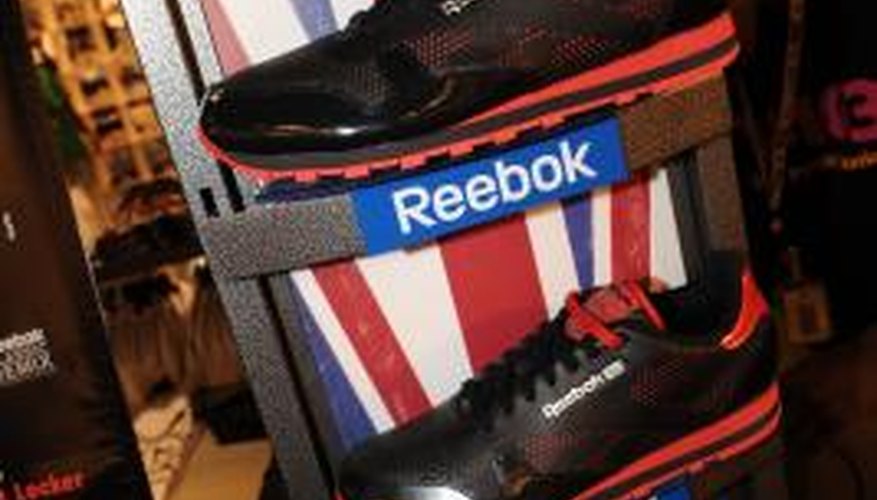Originally founded by Joseph William Foster in the late 1800s, Reebok began life as JW Foster and Sons when their founder attached spikes onto his running shoes. The Reebok name first appeared in 1958 and propelled the UK-based company from strength to strength. Their Reebok Classic sneaker, first produced in the 1980s, has become one of the most sought after sneakers on the market.
Double Back
This method of lacing is ideal for the hi-top version of the Reebok classic, as it allows you to throw in a horizontal line near the top of the shoe, accentuating the high profile of the sneaker. Begin by running each end of the lace through either of the eyelets in the second set down from the top of the sneaker. The left-hand lace is then fed downward through the right-hand eyelet of fourth set down from the top, and then fed downward through the bottom left-hand eyelet. The right-hand lace does the same but vice versa. Then the left lace is fed upward through the eylet directly above it, and then downward through the right hand eyelet, three sets from the top, before being fed upward through the top left-hand eyelet. The right lace again does the same but vice versa.
- This method of lacing is ideal for the hi-top version of the Reebok classic, as it allows you to throw in a horizontal line near the top of the shoe, accentuating the high profile of the sneaker.
- Then the left lace is fed upward through the eylet directly above it, and then downward through the right hand eyelet, three sets from the top, before being fed upward through the top left-hand eyelet.
Hidden Knot Lacing
The hidden knot method is perfect for someone who thinks that an untidy knot spoils the look of the sneaker. The lace ends are fed downward through the bottom set of eyelets. The left-hand lace is then fed upward through the left-hand eyelet of the third set up, then downward through the right-hand eyelet of the same set. It is then fed upward through the right-hand eyelet second from the top and then downward through the left-hand eyelet of the same set. The right lace is fed upward through the right eyelet of the second set up, and then mirrors the pattern of the left lace until both laces are on the left-hand side, where the hidden knot is tied.
- The hidden knot method is perfect for someone who thinks that an untidy knot spoils the look of the sneaker.
- The left-hand lace is then fed upward through the left-hand eyelet of the third set up, then downward through the right-hand eyelet of the same set.
Army Lacing
Army lacing allows the hi-top version of the Reebok classic to flex while walking. Feed the ends of the laces upward through the bottom set of eyelets, downward through the second set of eyelets up and then cross the laces over, feeding them upward through the third set of eyelets up on the opposite side. Repeat this pattern until you reach the top of the sneaker.
Checkerboard
For people who want to make their Reebok Classics the centrepiece of their outfit, the checkerboard method is the perfect way to draw attention to your trainers. You will need two pairs of contrasting, flat laces to pull this off correctly. Take the first pair of laces and feed its ends downward through the bottom pair of eyelets. Then feed the left lace through the left eyelet of the second set up, then make a horizontal line by feeding it downward through the right eyelet of the same set. Feed the right lace upward through the right eyelet of the third set up, then downward through the left eyelet of the same set, continuing this pattern with both ends and tucking the excess into the shoe. Then feed the second set of laces over and under the horizontal lines of the first lace. Start from the bottom, work your way up and then back down, and you should be able to go up and down in this manner twice before tucking the lace into the shoe.
- For people who want to make their Reebok Classics the centrepiece of their outfit, the checkerboard method is the perfect way to draw attention to your trainers.
- Then feed the left lace through the left eyelet of the second set up, then make a horizontal line by feeding it downward through the right eyelet of the same set.
